#sydenham-bankstown development corridor
Text

Ghost sign. Canterbury.
#ghost sign#long gone#finished#abandoned#it's a sign#ephemeral#facade#streetscape#doors#shabby#graff#derelict#earmarked for demolition#sydenham-bankstown development corridor#pictures on walls#inner west sydney
54 notes
·
View notes
Text
Density without Infrastructure
Week 3, Post 2
So continuing on my last post- also I don’t think I am opposed to compact living as a concept, I don’t think all future compact precincts in Sydney have been planned well.
Following the aforementinoed South-West Metro project, my own hometown, Bankstown and its sister suburbs in the Sydenham-Bankstown corridor will be the subject of great population growth. The current state government are forecasting the building of 35 000+ new dwellings by 2036. The Bankstown-Canterbury and Inner-West councils have both objected towards the current Sydenham-Bankstown corridor Urban Renewal plan. They claim that there has not been enough infrastructure planned to support the planned influx of residents- not enough green, open spaces, education/medical facilities, train station/path accessibility upgrades and roadwork. Honestly, I agree. Although I understand that the government does need to put the “new population” somewhere, I think it’s pretty irresponsible and unsustainable to build a compact precinct without the infrastructure support it needs. It’s also interesting that most of our planned developments (Sydenham-Bankstown, Parramatta, the Western Aerotropolis) are in the west- not the wealthy east coast.
Discussion of the new Waterloo project has also been floating around- Waterloo also being a Metro train station. The state government have clearly based a compact precinct there- planning to build really tall and poorly positioned towers, with planned population density being at least 3 times that of the densest areas of Sydney. Classmates of mine have accused the government of creating “slums” and “ghettos”. I guess it’s also making me doubt how compact precincts should be handled. We need higher-density living- but how do we make sure that government is working towards sustainable development and not working from the top-down approach to meet their numerical goals and line their pockets?
0 notes
Quote
Opposition to Sydney Metro is huge. LMS, or Locals for Metro Southwest has emerged amid widespread community concern about planning and transport policy along the Sydenham-Bankstown corridor. Planning decisions by the previous Canterbury Council are the subject of a ICAC examination and the level of opposition to the NSW Government's urban renewal plans and metro is huge and increasing; the launch of the Save T3 Bankstown Line group adds an important voice for the forgotten suburbs beyond Bankstown. Developers, and those hoping to personally profit from Hong Kong-style development, will obviously be worried about community push-back, but it is only because of the hard work of community groups (such as the Hurlstone Park Association, of which I am a member) that the government has been forced to consider issues such as heritage, green space and local amenity. From my observations, LMS has simply regurgitated the tired old propaganda of the NSW Government. Their "Fast Facts" sheet for example, states the Sydney Metro travel time to Barangaroo will be slashed from 40 to 13 minutes, in fact travel time from Bankstown to Martin Place on the Sydney Metro will be at least 32 minutes, with Barangaroo beyond that. They also state that 54 per cent of submissions to the urban renewal strategy were supportive. Not only are we still awaiting the submissions report, the vast majority are scathing of the strategy, and the few that are supportive appear to be strongly skewed in the developer camp.
Marie Healy
0 notes
Text
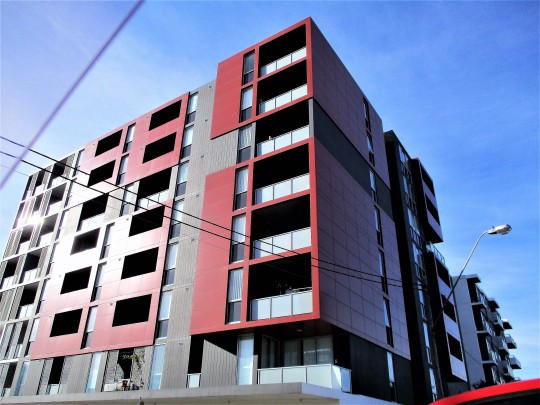
Cookie cutter little boxes. Relatively new apartment development on what used to be a full urban block of perfectly good 1920's-30's era housing. Units sold mainly to real estate speculators; the building remains largely vacant 18 months after construction. Canterbury.
#little boxes#concrete and steel#cookie cutter#apartment buildings#21st century architecture#the future#vacant#flats#unaffordable housing#skyline#streetscape#real estate sharks#over development#sydenham-bankstown development corridor#inner west sydney
43 notes
·
View notes
Photo

Pancake uniformity on this shocker of a new apartment development, which apparently had dodgy planning approvals. Ironically, it’s built on the former site of a huge industrial timber yard and building trade supplies store. Canterbury.
#dodgy#apartments#uniformity#greed#apartment blocks#flats#pancakes#future slum?#high rise#shit sydney#sydenham-bankstown development corridor#skyline#streetscape#inner west sydney
35 notes
·
View notes
Photo



The old Canterbury bowlo. Former Canterbury Lawn Bowling Club, now abandoned. Founded in 1956, but gradually lost popularity in its last couple of decades. After a failed community effort to keep the bar going, closed in 2013 and disused ever since in a long debate over future usage. As a compromise, looks like it will be leased by the Local Govt. council for two years as a works depot for the new Metro rail project, after which it will somehow become a public reserve, adding to adjacent riverside parkland. The clubhouse is set to be demolished despite having one of the largest sprung dance-floors in Australia in the lower level (not seen here). The abandoned greens are on some handy acres next to the Sydenham-Bankstown Railway. At least it seems to have been saved from more of the nearby high-rise residential apartment developments. Canterbury.
#abandoned#derelict#finished#closed#old bowlo#lawn bowls#bar#booze#clubhouse#greens#shabby#decrepit#no over development#environment#rust#ephemeral#over grown#metro rail#sydenham-bankstown development corridor#inner west sydney
38 notes
·
View notes
Photo

A miniature of playground equipment, inside a Little Free Library. Dulwich Hill.
#playground#little free library#miniature#model#park#pets#apartment buildings#palm tree#streetscape#it's a sign#decorative#over development#sydney light rail#sydenham-bankstown development corridor#inner west sydney
49 notes
·
View notes
Photo

Old & New. Three isolated late-19th century terrace houses jammed up hard against a brand new apartment development. How on earth did they survive, when so many others were lost? Speculators or hold-outs against rampant over development? Lewisham.
#incongruous#old & new#terrace houses#19th century#1880's era#late victorian-era architecture#apartment development#concrete and steel#little boxes#population pressure#high rise#over development#sydenham-bankstown development corridor#inner west sydney
45 notes
·
View notes
Photo

Recently completed brand new pancake apartment buildings; bought off the plan and mostly sitting vacant. Suspect development approvals. Overlooks a four-lane highway. Canterbury.
#apartment development#flats#little boxes#concrete and steel#shoddy#suspect#appalling#hideous uniformity#skyline#new shit#apartments#over development#sydenham-bankstown development corridor#inner west sydney
27 notes
·
View notes
Photo

Inner West light rail. Two stops from the terminus. Still the only fully operational tramway in all Sydney on a disused freight line corridor. The new track to the East is billions over budget and two years behind schedule. Dulwich Hill.
(Sydney used to have one of the most extensive electric tramway systems in the world, peaking in 1922-23 at 291kms with max. annual passenger journey's of 405 million in 1945, but they were all gone by 1961. Every last line. In retrospect, a dreadful lack of foresight, but they never knew no better. You don't know what you've got 'till it's gone).
#tramway#light rail#train tracks#trams#commuter transport#travel#it's a sign#street trees#sydenham-bankstown development corridor#inner west sydney
31 notes
·
View notes
Photo

Brand new six-storey apartment building in the Brutalist manner. Lewisham.
#apartment development#brutalist architecture#concrete and steel#little boxes#apartments#flats#balconies#windows#streetscape#bourgeois#sydenham-bankstown development corridor#inner west sydney
26 notes
·
View notes
Photo
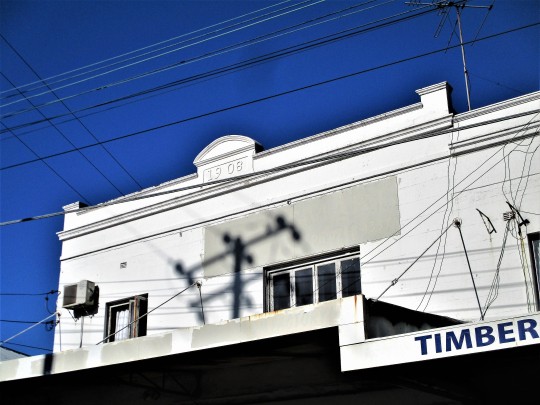
Abandoned Edwardian-era building. The shops and flats are long gone. Doubt that the date on this will save it from the wrecking ball. Canterbury.
#edwardian-era architecture#skyline#abandoned#shop top#finished#gone#dated#vintage#wrecking ball#derelict#decrepit#early 20th century#sydenham-bankstown development corridor#inner west sydney
36 notes
·
View notes
Photo

You don't see these that often anymore. Light industrial unit built of fibro-cement. Probably 1940's vintage. Canterbury.
#factory#fibro#light industrial#1930's-1940's architecture#skyline#streetscape#sydenham-bankstown development corridor#inner west sydney
32 notes
·
View notes
Photo
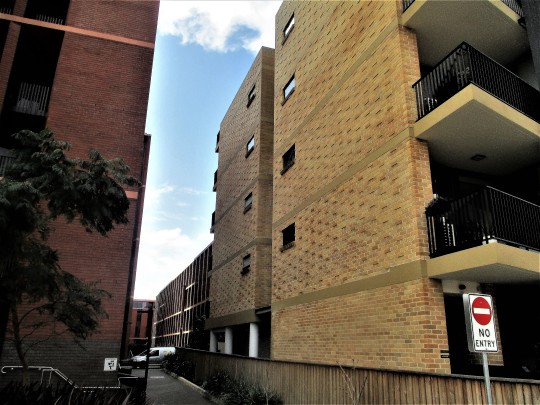
Wind tunnel. Ugly new apartment development on remediated former heavy industrial land. Dulwich Hill.
#apartment developments#apartment buildings#little boxes#flats#concrete and steel#streetscape#wind tunnel#new sydney#shit sydney#skyline#yuppie scum#facade#over development#sydenham-bankstown development corridor#inner west sydney
31 notes
·
View notes
Photo
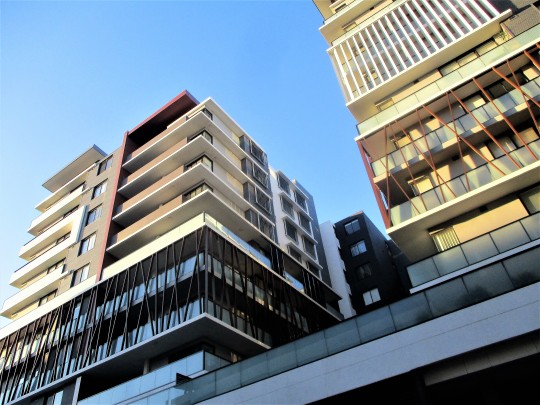
Ugly pancake uniformity. Part of a new high rise apartment development on old industrial land with fine water views of Sydney's most polluted waterway, the Cooks River. Canterbury.
#apartment development#high rise#flats#apartment buildings#hideous uniformity#skyline#streetscape#facade#high rent#yuppie scum#sydenham-bankstown development corridor#the future#inner west sydney
24 notes
·
View notes
Photo
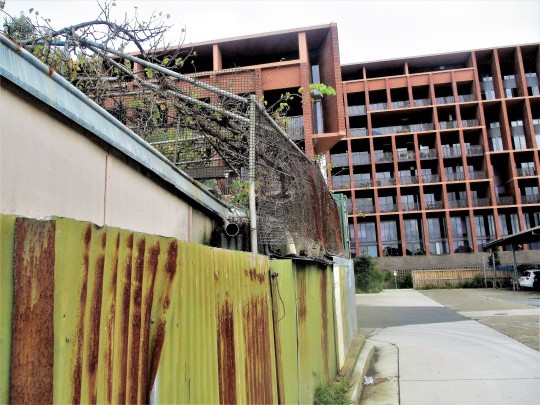
Brand new apartment development on remediated former heavy industrial land. Dulwich Hill.
#apartment development#apartment buildings#new sydney#the future#flats#little boxes#concrete and steel#over development#incongruous#bourgeois#rust#yuppie scum#sydenham-bankstown development corridor#inner west sydney
18 notes
·
View notes